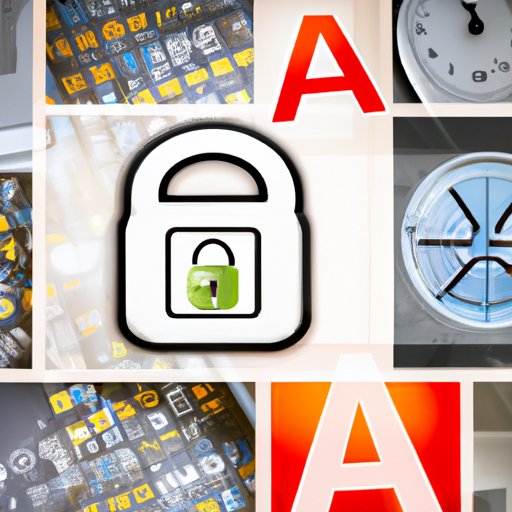Introduction
Home security has always been a top priority for homeowners. We lock our doors and windows, install alarms, and take other physical security measures to protect our homes and those inside them. However, relying solely on physical security measures is no longer enough in today’s digital age. Hackers and cybercriminals can target our homes through our digital devices and online activity. In this article, we’ll explore the importance of digital security measures and how they can complement your physical security plan for comprehensive home security.
The Importance of Digital Security Measures in Today’s Home Security Landscape
While traditional home security measures are still important, they’re no longer the only consideration for homeowners. With the rise of the internet and smart devices, our homes have become vulnerable to cyber threats. By neglecting digital security measures, homeowners leave themselves open to attacks that can result in identity theft, financial loss, and compromised physical security.
One study found that 67% of cyber attacks against small and medium-sized businesses resulted in data breaches, highlighting how crucial digital security has become. That’s why it’s essential to have a comprehensive home security plan that includes both physical and digital security measures.

5 Critical Cybersecurity Measures to Consider alongside Your Physical Home Security Plan
Digital security measures can be confusing and overwhelming, but taking even small steps can greatly enhance your overall security. Here are five critical cybersecurity measures every homeowner should consider:
1. Create strong passwords – Weak passwords are one of the easiest ways for hackers to gain access to your online accounts. Ensure that your passwords are at least 12 characters long, use a mix of uppercase and lowercase letters, and include numbers and symbols. Avoid using personal information, such as your birthday or social security number, in your passwords.
2. Use two-factor authentication – Two-factor authentication provides an additional layer of security for your online accounts. By requiring a second form of identification, such as a text message or fingerprint scan, hackers are less likely to gain access even if they have your password.
3. Back up important files – In the event of a cyber attack, having a backup of your important files can be a lifesaver. Consider using cloud storage or an external hard drive to regularly back up files such as financial records, family photos, and important documents.
4. Keep software up to date – Software updates often include security patches that address known vulnerabilities. By keeping your devices and software up to date, you close off potential avenues for cyber attacks.
5. Use antivirus software and firewalls – Antivirus software and firewalls can help protect your devices from malware, viruses, and other cyber threats. Install and utilize these tools on all your devices for optimal protection.
Don’t Neglect Your Online Presence: A Comprehensive Approach to Home Security
It’s not just our devices that are vulnerable to cyber attacks. Hackers can also use our online presence to target homeowners, such as through social media or phishing scams. To protect your online presence:
1. Practice good password habits – Passwords used for social media accounts, email, and financial accounts should be unique and different from each other. Avoid sharing them with anyone, even close friends and relatives.
2. Increase your privacy settings – Review your privacy settings on social media accounts and adjust them to increase your privacy. Avoid sharing personal information publicly, such as your address or phone number.
3. Beware of phishing scams – Phishing scams use fake emails or websites to trick you into giving up personal information. Be cautious when opening emails from unknown senders and always verify the authenticity of websites before entering personal information.

The Role of Education and Awareness in Maximizing Your Home Security
Education and awareness are critical components of comprehensive home security. By staying informed about potential threats and how to prevent them, you can greatly reduce your risk of becoming a victim. Here are some examples of ways to stay informed about security issues:
1. Read security blogs and news articles – Keep up to date on the latest security trends and threats by reading blogs and news articles focused on security.
2. Attend security training sessions – Many organizations offer cybersecurity training sessions for employees or customers. Attend these sessions to increase your knowledge and skills.
3. Discuss security with friends and family – Talk to friends and family about best practices for digital security. By spreading awareness, you can help others stay safe as well.

Why Data Privacy is Key in the Modern Home Security Equation
Data privacy is a critical component of digital security. When your personal data is compromised, it can be used to compromise your physical security as well. Here are some tips for protecting your personal data:
1. Only collect what you need – Consider what personal data is really necessary for online accounts and avoid providing additional information.
2. Use a virtual private network (VPN) – A VPN can encrypt your internet connection, protecting your personal data from hackers on public Wi-Fi networks.
3. Be wary of sharing personal information – Avoid sharing personal information on social media, and be cautious of unsolicited requests for personal information.
Complete Home Security: A Holistic Approach to Protecting Your Home Inside and Out
A comprehensive home security plan requires a holistic approach that addresses both physical and digital security measures. By combining the best practices of both, you can effectively safeguard your home and the people inside. Remember to:
1. Utilize both physical and digital security measures – Install alarms, locks, and cameras as well as using digital security measures like firewalls and antivirus software.
2. Stay informed – Stay up to date on the latest security trends and threats by reading security blogs, attending training sessions, and discussing security with friends and family.
3. Be proactive – Don’t wait until you become a victim to take action. Take proactive measures to protect your home and personal data.
Conclusion
In today’s digital age, it’s no longer enough to rely solely on physical security measures to protect our homes. Digital security measures are crucial for a comprehensive home security plan that safeguards both our physical and digital lives. By following the best practices outlined in this article and taking a holistic approach, homeowners can greatly enhance their overall security and peace of mind.
